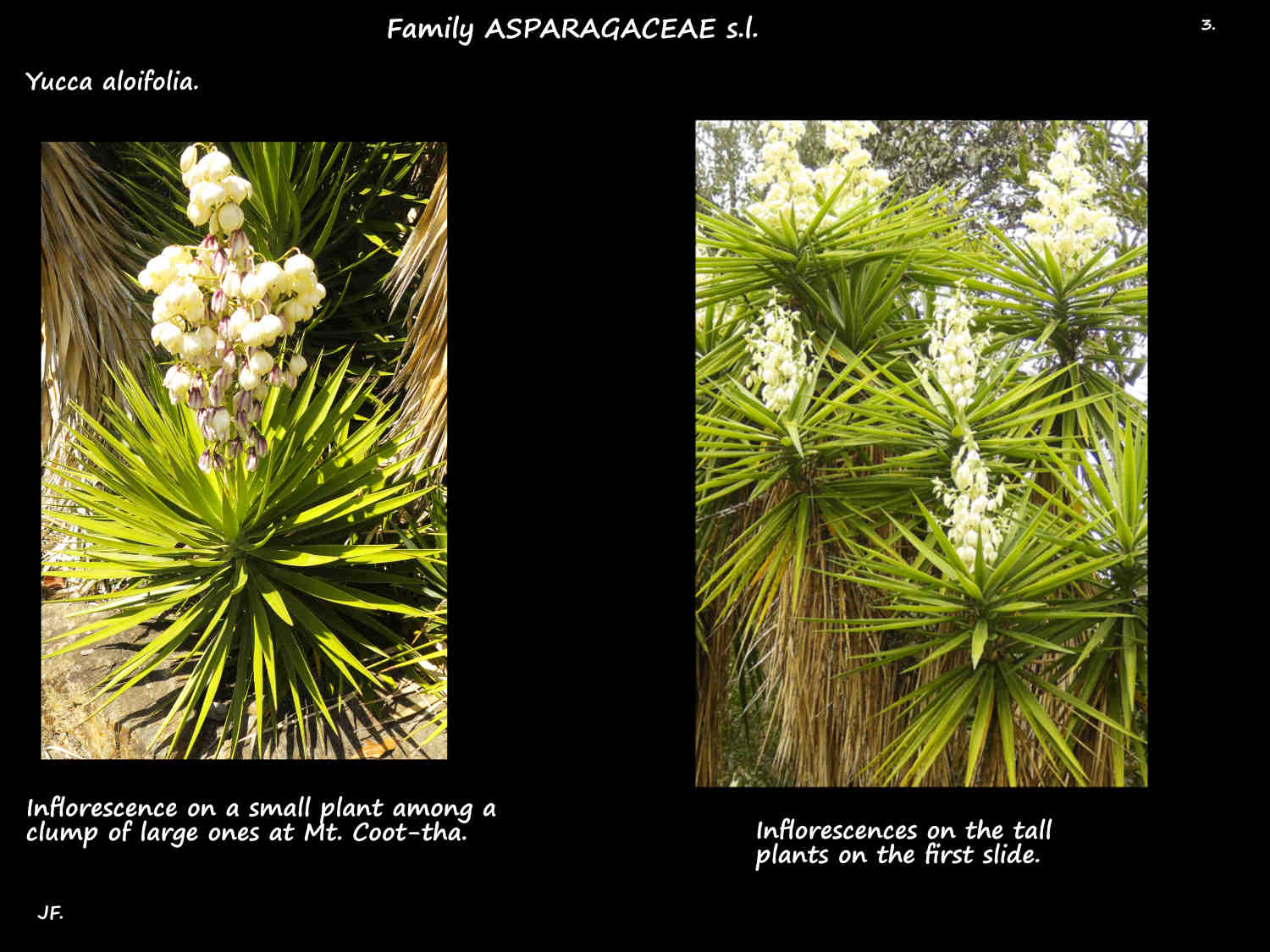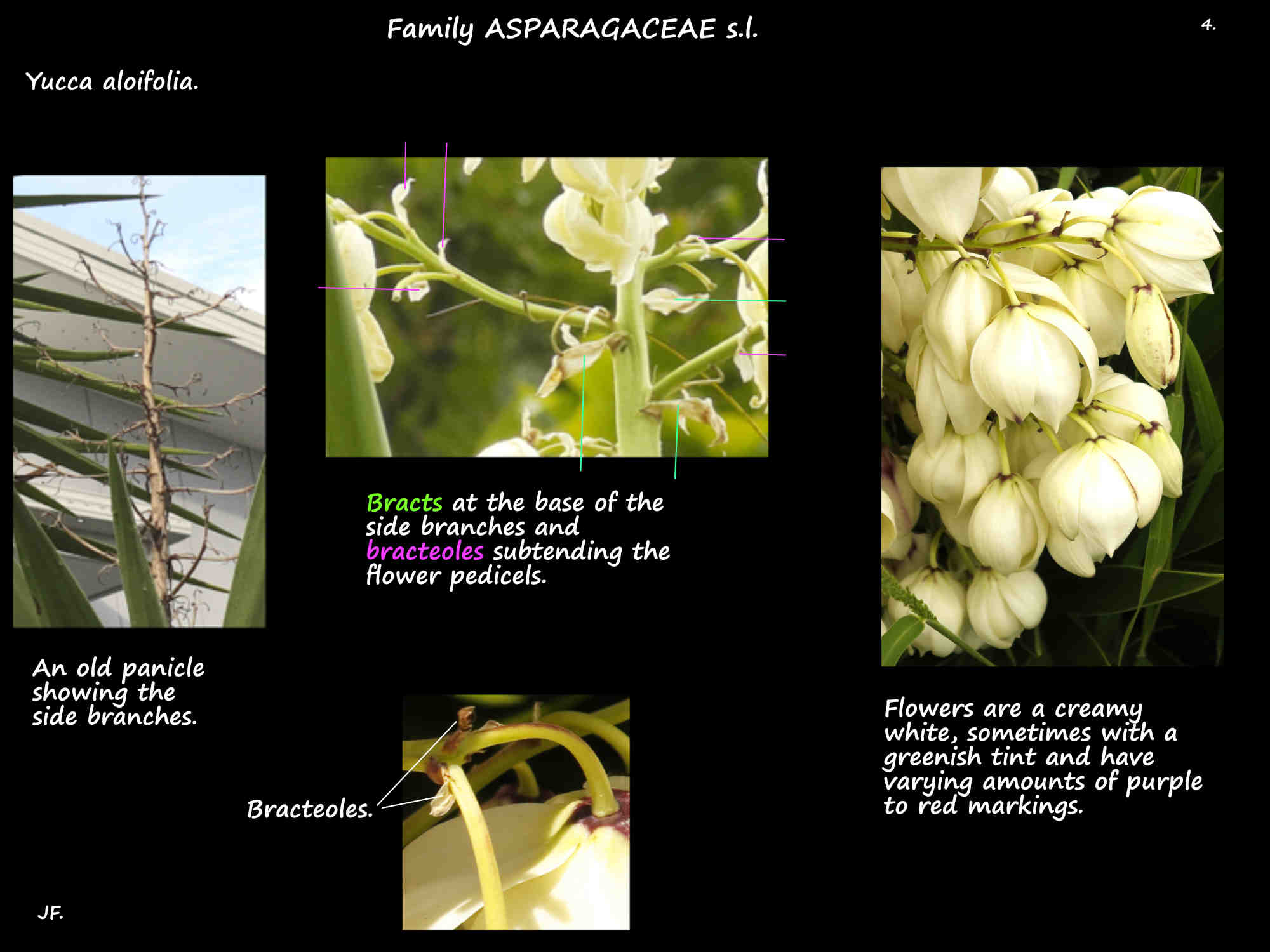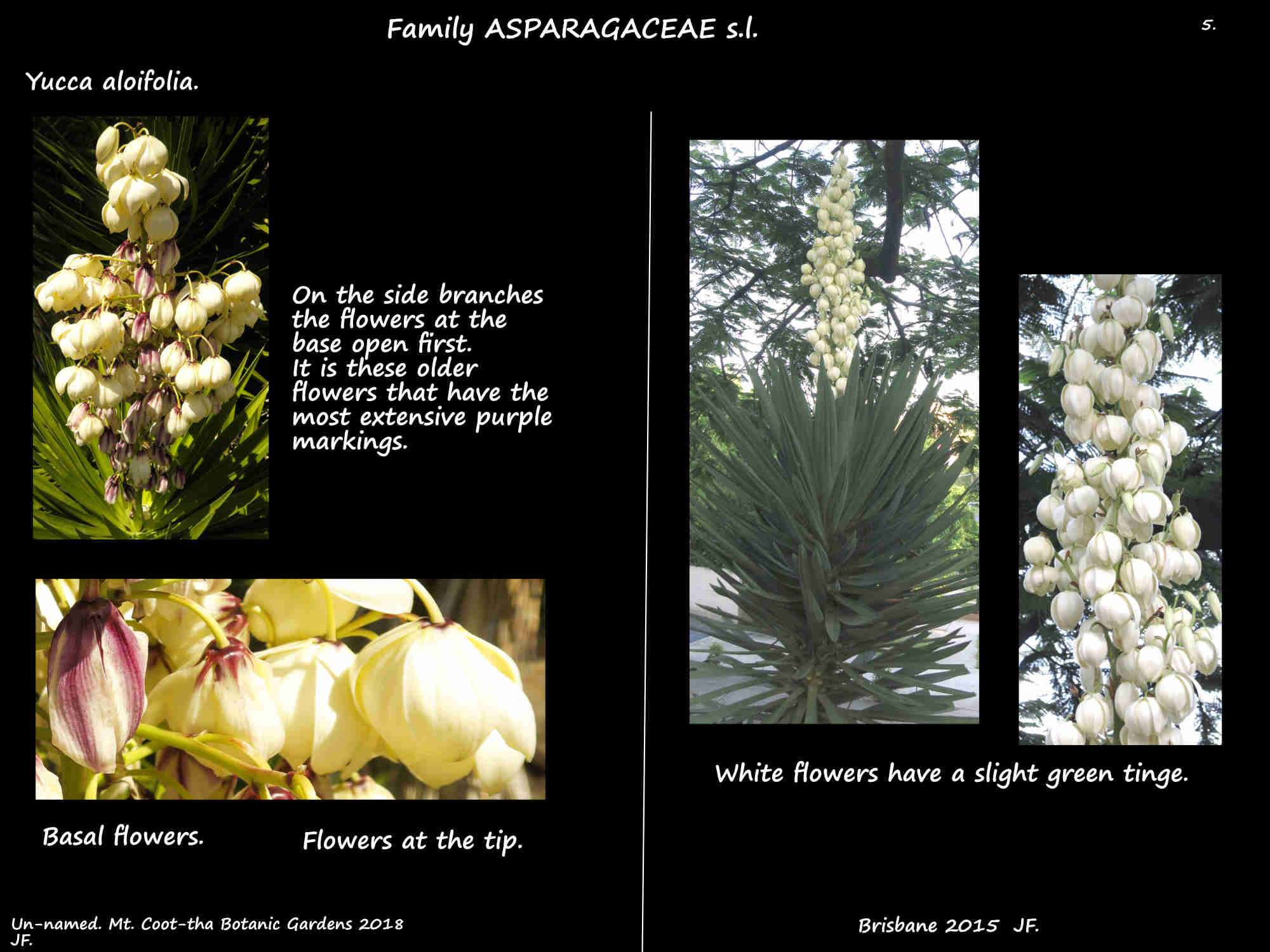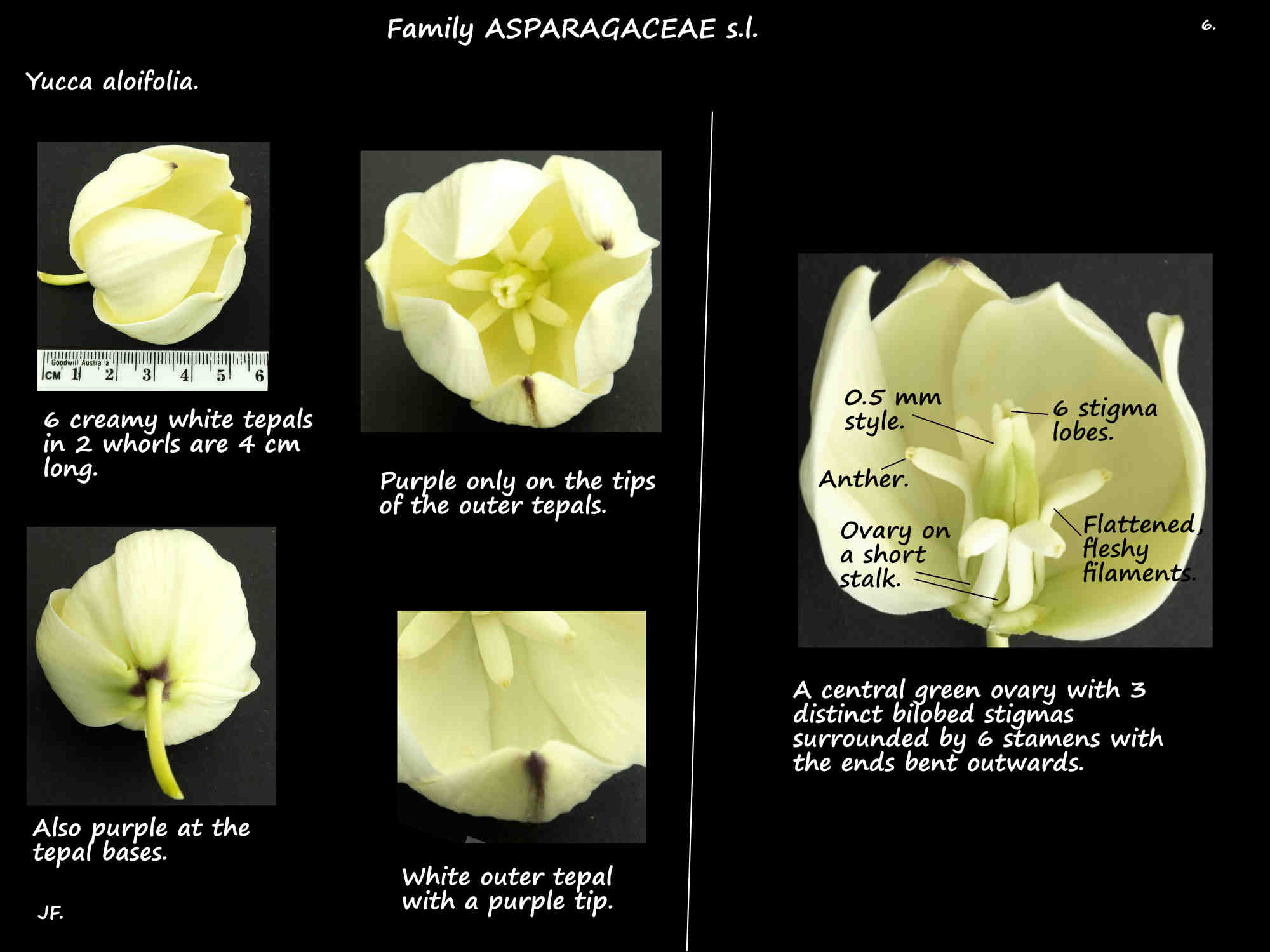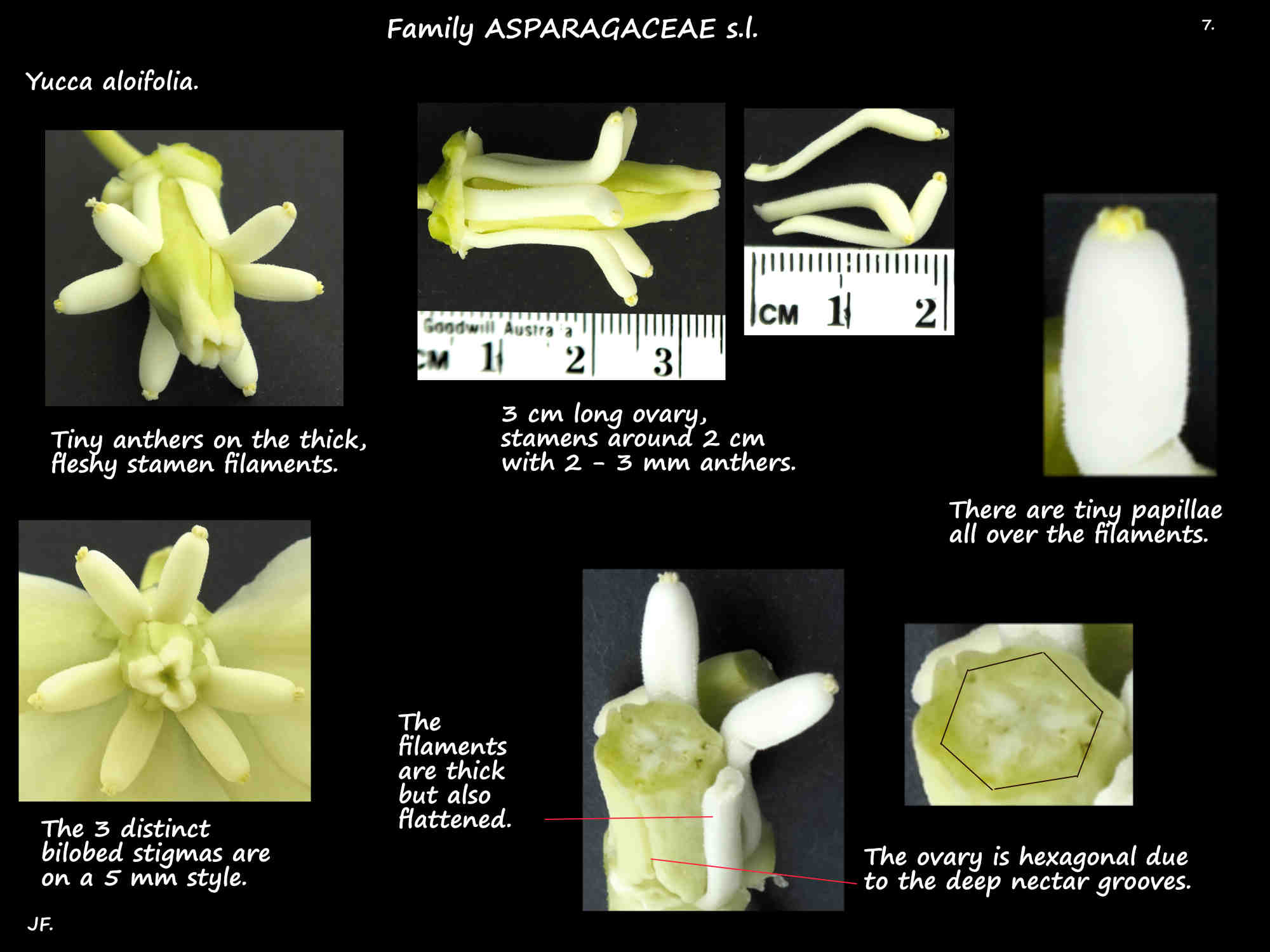Yucca aloifolia.
The Spanish bayonet is commonly seen in Brisbane.
They are succulent, clump-forming tree-like plants with a thick above ground stem or trunk.
Slow growing they are often seen as shrubby plants around 1.5 to 2 m high but they can get to 7 or 8 m.
The trunk can be erect or slightly angled and sometimes almost horizontal.
There may be a single trunk but there are often a few branches especially on pruned plants.
The trunk is covered in drooping, dead leaves.
The straight alternate and spirally arranged leaves form a dense rosette.
The rigid deep green linear leaves are up to 40 cm long and 6 cm wide.
They have very small teeth along the edge and a very sharp pointed tip.
The branched terminal inflorescences, partly hidden by the leaves are around 0.5 m long.
There are bracts at each division.
The many drooping flowers, up to 7 cm long are on a pedicel with a bracteole at the base.
The 6 fleshy tepals, up to 4 cm long and 2 cm wide are joined at the base for only a mm or so.
They are white to pale cream with a greenish tinge and the tip is often purple.
The 6 stamens have white filaments around 2 cm long with small 2 to 3 mm anthers.
The narrow pale green ovary, up to 4 cm long is on a short stalk.
The 0.5 cm long style has 3 distinct bilobed stigmas.
The fleshy brown ovoid berry-like fruit are up to 6 or 7 cm long and 2.5 cm wide.
There are numerous round black seeds 6 mm across and only 2.5 mm thick.
There are variegated cultivars with white or yellow stripes on the leaves.
(The very similar Yucca gloriosa, the Spanish dagger has leaves that may bend
at the end and the edges have no teeth.
The ovary has no stalk and its base is fused with the tepal bases.
The white flowers may have a tinge of purple or red.
It also has cultivars including ones with variegated leaves.)
J.F.


